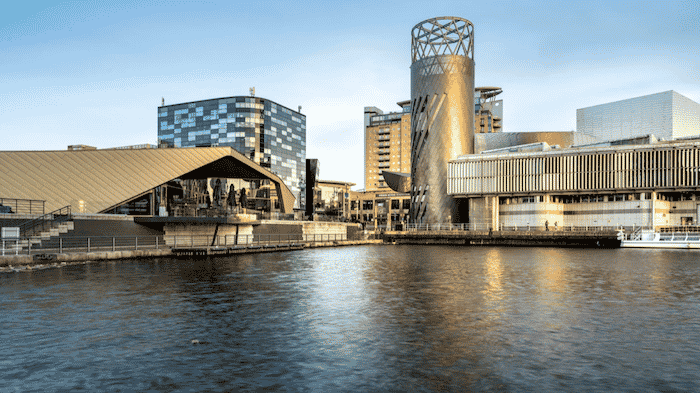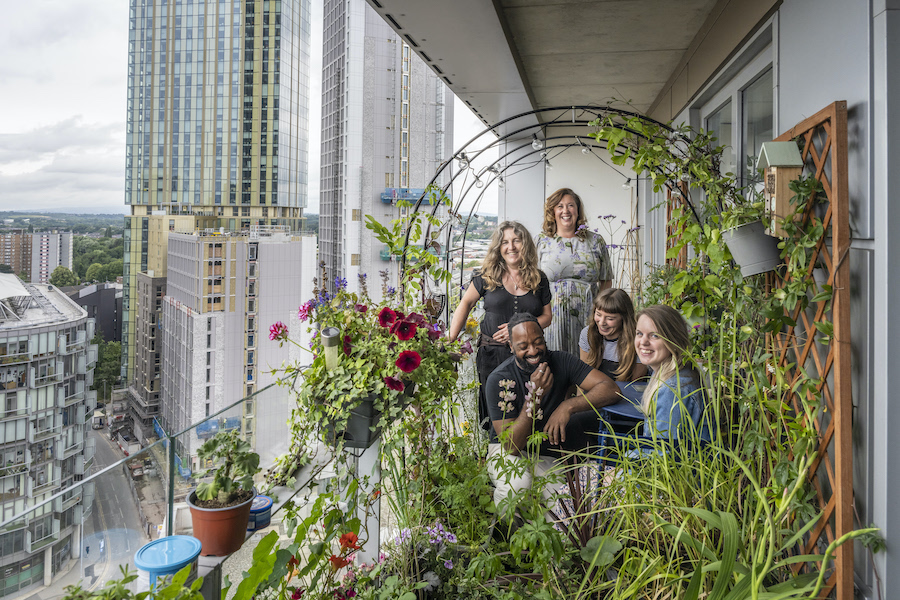It all comes from here: the music lovers guide to Greater Manchester
- Written by I Love MCR
- Last updated 4 years ago
- Exhibitions, Music
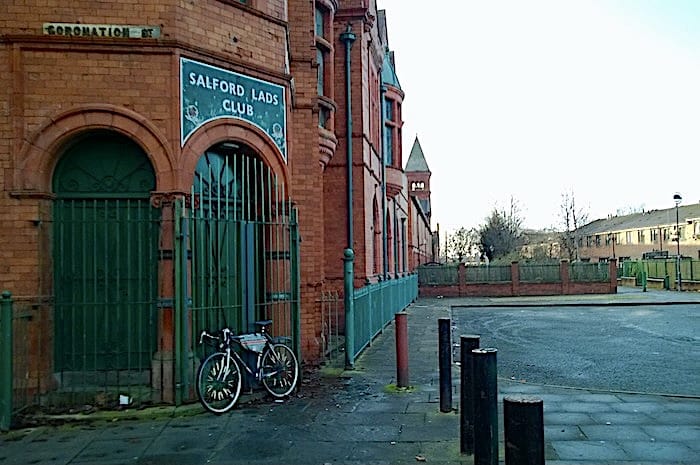
“The thing about Manchester is… it all comes from here.” Noel Gallagher said that.
It’s true. Manchester is famous for many things – Coronation Street, football and rain. But above all, it’s known for its musical roots, setting countless iconic bands on their road to success and inspiring the creation of the iconic Factory Records and the following ‘Madchester’ scene.
Commenting on Oasis Knebworth 1996, Ocean Colour Scene guitarist, Steve Cradock, said “it took guitar and rock’n’roll music about ten years to recover from the popularity of Oasis and the Madchester scene.”
So, with thousands of students arriving in Manchester this month for university, and to plug new exhibition Use Hearing Protection: The early years of Factory Records – which celebrates the lesser-known stories of one of the city’s most influential record labels – the Science and Industry Museum has compiled a true music lovers’ guide to landmarks in the region, with connections to some of the most famous musical icons.
Iconic Manchester music locations

From Joy Division and The Smiths to Oasis and Elbow, there are pieces of music history hidden across the region – many of which you may not even know about…
86 Palatine Road
Located in leafy Didsbury, it would be easy to walk past 86 Palatine Road without a second glance. But this modest detached house split into flats was where Factory Records was founded in 1978. It was in one of the top floor apartments where Tony Wilson and Alan Erasmus set up Factory Records.
They would go on to release the likes of Joy Division’s ‘Unknown Pleasures‘ and become one of the most influential independent record labels – playing a major part in the city’s transformation from an industrial powerhouse to a beacon of art and culture by reclaiming its past and leading a new wave of creative industries.
Although music lovers can’t go inside, a blue plaque commemorates the apartment’s important role in musical history.
Located: 86 Palatine Road, West Didsbury
The Haçienda
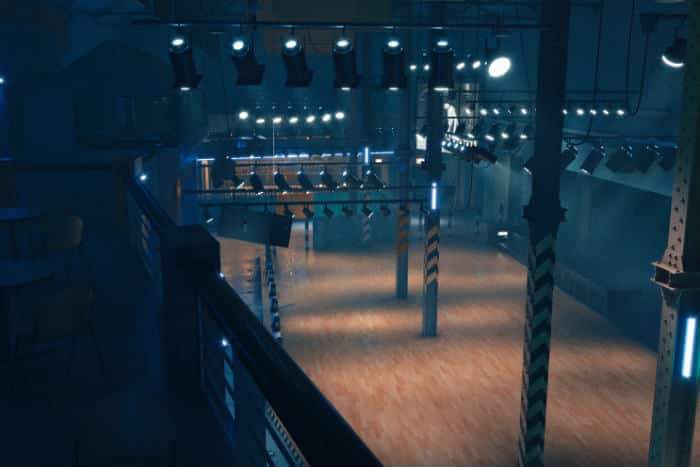
The most famous of all landmarks of the Manchester music scene had to be the Haçienda. Opened on the 21st May 1982, the nightclub and music venue was the brainchild of Rob Gretton and financed mainly by Factory Records and the band New Order, along with label boss Tony Wilson.
Everyone from The Smiths to even Madonna, who appeared there for her very first UK performance, played at the Haçienda, and it is known for being instrumental in the careers of many of the UK’s biggest bands, including Oasis and The Happy Mondays. But it was during the ‘Madchester’ scene, and the venue rose to fame before becoming world-famous during the Acid House years.
The nightclub was demolished in 2002 after years of issues and replaced by modern flats, with a plaque being all that remains of the legendary ravers’ paradise.
Location: 15 Whitworth Street West
Epping Walk Bridge
This is just another bridge to some, but this is an essential piece of the band’s history to Joy Division fans. Set in Hulme, the bridge is where one of the more famous photos of Joy Division was taken by photographer Kevin Cummins.
Location: Hulme, M15 6DU
The Free Trade Hall
Now home to a Radisson Hotel, this is one of the most significant buildings in Manchester’s music history thanks to playing host to the ‘gig that changed the world’ in its upstairs venue, The Lesser Free Trade Hall, when the Sex Pistols played to a crowd of about 40 people in 1976.
While the gig itself wasn’t anything out of the ordinary, what was special was that many of the those who attended were inspired enough to go on to form some of Manchester’s biggest bands. Including The Smiths, Joy Division, The Fall and Buzzcocks.
Location: Peter Street, M2 5QR
FAC 251 Factory Manchester
A nightclub and live venue, FAC 251 Factory Manchester is based in the former Factory Records headquarters at 118 Princess Street. The name comes from the fact that the label employed a unique cataloguing system that gave a number not just to its musical releases but also to artwork and other objects.
Location: 118 Princess St, Manchester M1 7EN
Salford Lads Club
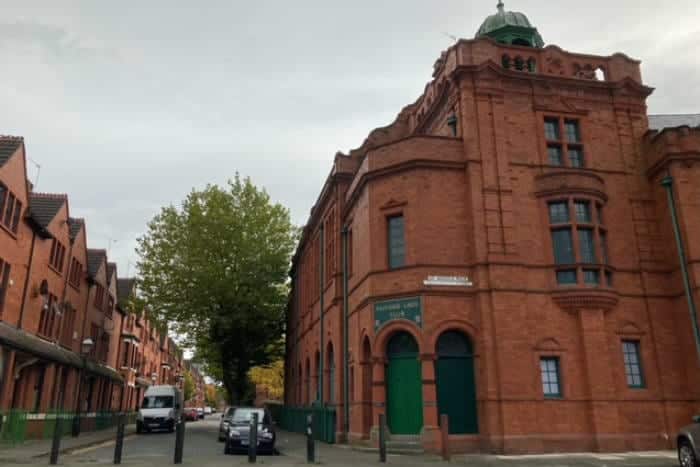
A must-visit for any Smiths fan is the Salford Lads Club. Famous for appearing on The Smiths’ ‘The Queen is Dead’ LP’s inner sleeve, it’s the perfect excuse to recreate your version of one of The Smiths’ most iconic photos.
Location: St Ignatius Walk, Salford. M5 3RX
Southern Cemetery Gates
Another one for diehard fans of The Smiths, the Southern Cemetery Gates at Barlow Moor Road in Chorlton was the inspiration for their song ‘Cemetery Gates’ from ‘The Queen Is Dead’ album. It focuses on Morrissey’s fascination with death – singing about taking a stroll through the cemetery.
Location: Southern Cemetery Gates, Barlow Moor Road, Chorlton
The Boardwalk
One of Britain’s legendary music venues and practice spaces is known as the place where Oasis made their live debut, but it also hosted other ‘Madchester’ icons such as The Charlatans and The Stone Roses. Although the club closed in 1999 and was converted into apartments, a blue plaque on the building pays homage to the venue’s importance.
Location: Little Peter Street. M15 4PS
Sifters Record Shop
For any Oasis fan, it’s worth paying a visit to the legendary second-hand record shop, Sifters Record Shop, on Fog Lane in Burnage. It’s where Liam and Noel Gallagher used to buy their music when they were growing up, and it’s even mentioned in the song ‘Shakermaker’ in the line ‘Mr Sifter sold me songs when I was just sixteen.’
Location: 177 Fog Lane. M20 6FJ
The Temple of Convenience
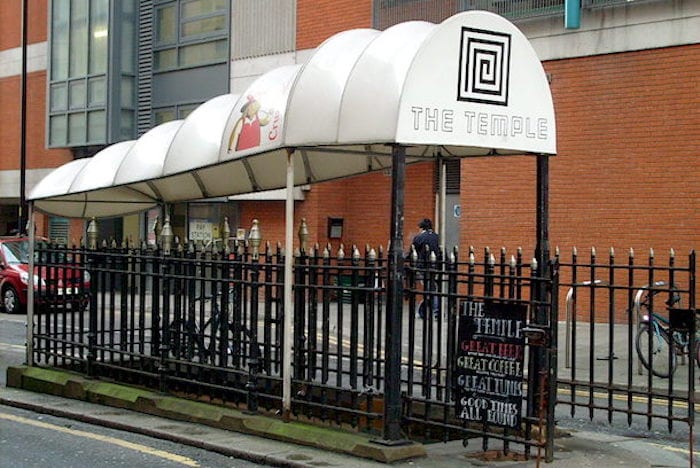
This bar and a former Victorian public toilet in the centre of Manchester is referenced in one of Elbow’s most famous songs’ Grounds for Divorce.’ ‘There’s a hole in my neighbourhood down which of late I cannot help but fall’ – is literally talking about a hole in the road of the street where singer Guy Garvey used to live.
Location: 100 Great Bridgewater Street. M1 5JW
Use Hearing Protection exhibition at the Science and Industry Museum
Supported by the Players of the People’s Postcode Lottery, the Use Hearing Protection: the early years of Factory Records exhibition has been developed by the Science and Industry Museum in association with consultant curators Jon Savage and Mat Bancroft and partner Warner Music UK. It reinterprets and expands on the original Use Hearing Protection: FAC 1 – 50 / 40 exhibition held at Chelsea Space in London in 2019 and will display some items from Jon Savage’s personal collection of Joy Division artefacts (acquired by the museum in 2019), as well as objects loaned from the estates of both Tony Wilson and Rob Gretton, the former manager of Joy Division and New Order.
Tickets for Use Hearing Protection: the early years of Factory Records are available now and are priced at £8 for adults and £6 for concessions, with under-12s going free.
For more information or to book tickets, click here.
- This article was last updated 4 years ago.
- It was first published on 23 September 2021 and is subject to be updated from time to time. Please refresh or return to see the latest version.
Did we miss something? Let us know: press@ilovemanchester.com
Want to be the first to receive all the latest news stories, what’s on and events from the heart of Manchester? Sign up here.
Manchester is a successful city, but many people suffer. I Love Manchester helps raise awareness and funds to help improve the lives and prospects of people across Greater Manchester – and we can’t do it without your help. So please support us with what you can so we can continue to spread the love. Thank you in advance!
An email you’ll love. Subscribe to our newsletter to get the latest news stories delivered direct to your inbox.
Got a story worth sharing?
What’s the story? We are all ears when it comes to positive news and inspiring stories. You can send story ideas to press@ilovemanchester.com
While we can’t guarantee to publish everything, we will always consider any enquiry or idea that promotes:
- Independent new openings
- Human interest
- Not-for-profit organisations
- Community Interest Companies (CiCs) and projects
- Charities and charitable initiatives
- Affordability and offers saving people over 20%
For anything else, don’t hesitate to get in touch with us about advertorials (from £350+VAT) and advertising opportunities: advertise@ilovemanchester.com

Review: Boys From the Blackstuff at LOWRY ‘packs a hard-hitting emotional punch’

“Manchester keeps it real” Comic opens up on trauma, toxic exes, and turning pain into punchlines

Bury FC complete one of football’s greatest comebacks with Gigg Lane glory

Best bars and pubs to watch the football and live sport in Manchester

Discotheque Royale vs Piccadilly 21s: which was your favourite 90s Manchester club?
